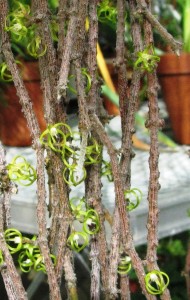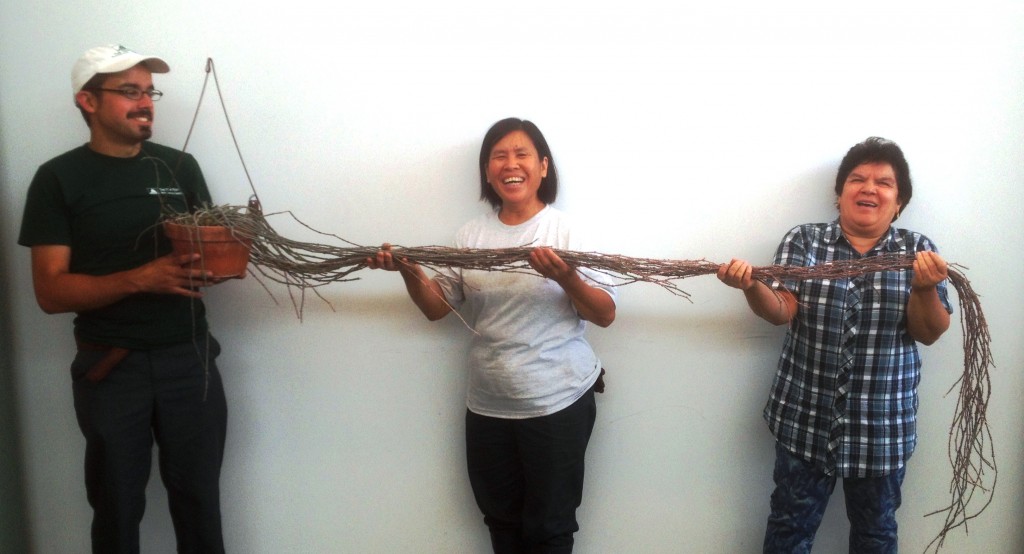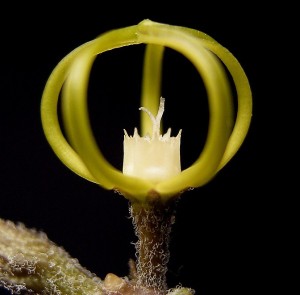A Thriving Bundle of Twigs
Posted in Horticulture on September 9 2014, by Christian Primeau
Christian Primeau is the NYBG‘s Manager of the Enid A. Haupt Conservatory.

The following is an excerpt from a conversation I had with my lovely wife regarding one of my favorite plants:
“Is it…dead?”
“No, it’s not dead.”
“Are you sure?”
“Well, it’s what I do for a living, so yes, I’m sure.”
“I think its dead.”
“I assure you it is alive.”
“I’m just saying it doesn’t look that way.”
As thrilled as I’d be to title this blog post “The Time I Was Right,” let me set aside petty triumphs (I’ll celebrate later) and address this mystery plant that looks dead, but isn’t. You don’t often stumble across Cynanchum marnierianum for sale and very rarely will you see it on display. The reason is fairly evident—most people wouldn’t consider a plant that looks like a bundle of dead twigs all that stimulating.
Call me a contrarian, but when I hear someone exclaim how ugly a plant is, it makes me love it that much more. Let us save the pretty plants for those with no imagination! I think maybe Proust said that. I appreciate conventionally beautiful plants as much as the next person but, like Grumpy Cat or Adrien Brody, some things appear so bizarre one can’t help but love them.

Cynanchum marnierianum, or “Stick Plant,” is certainly a fascinating oddity. In the arid scrub forests and dry plateaus of Madagascar where it is native, plants have evolved to be tough, to take advantage of scarce resources and, above all, to protect themselves against predation. Herbivorous animals enduring the same harsh conditions would love nothing more than an easy meal. While Euphorbia species from these areas produce a caustic sap, and plants such as Pachypodium and Alluaudia are armed with vicious spines, Cynanchum takes survival strategy a step further: it plays dead.

The thin, roughly-textured, rambling olive drab to brown stems camouflage the plant perfectly amid dry grasses, stone, and scrub. Any hungry creature looking for a nutritious entree would certainly pass over the decidedly unappetizing dead “twig” and continue on, hoping for greener pastures. Each October, however, Cynanchum breaks character and emerges from obscurity. Intricate golden-green flowers resembling miniature Chinese lanterns burst forth along the entire length of the stem, emitting an intoxicating perfume reminiscent of Froot Loops cereal. I ask you, does it get any better than that? This cereal-loving horticulturist doesn’t think so.
I encourage plant enthusiasts to give a few “unconventionally beautiful” plants a chance now and again—they just may surprise you. Like many succulents, Cynanchum marnierianum requires only a well-drained soil mix and good sun to thrive. The absolutely spectacular 25-year-old specimen cared for by NYBG’s dedicated Nolen Greenhouse staff is living proof. Key word “living!”


Cool article, interesting plant, intriguing flower! Pollinated by gyroscopes? I hope to see it on display in the Conservatory some day.